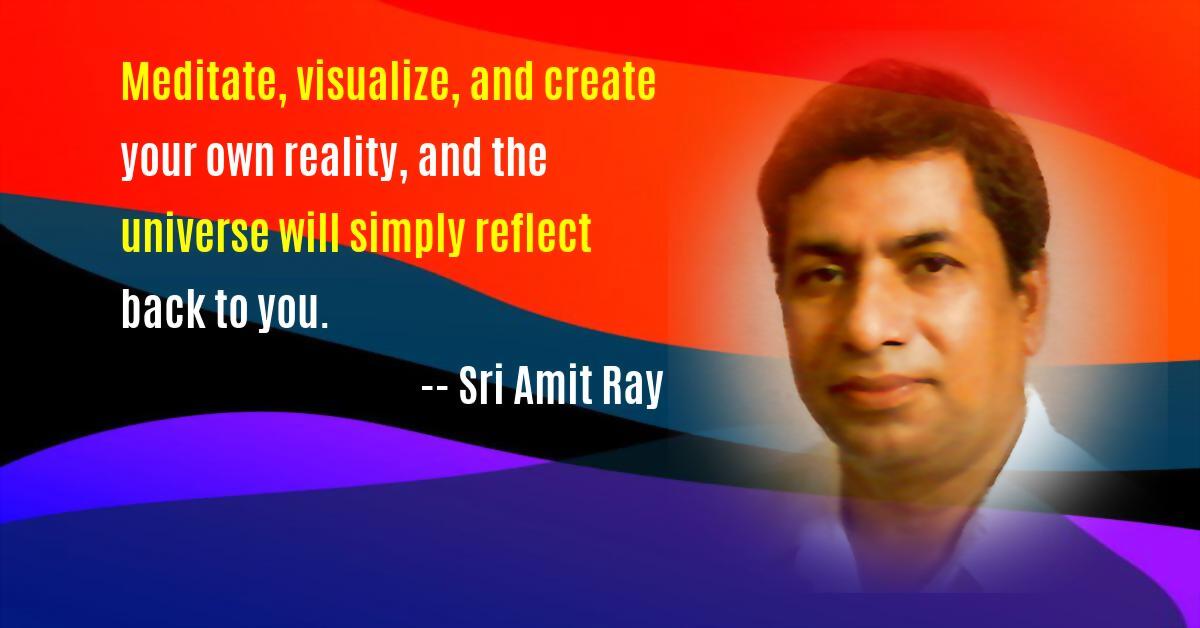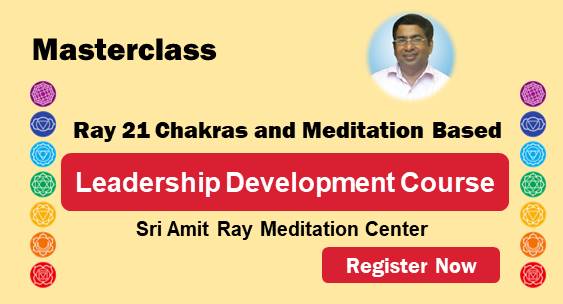Visualization techniques have become increasingly popular in the world of sports psychology as athletes strive to improve their performance and overcome challenges. By creating mental images of successful performances, athletes can improve their focus, reduce anxiety, and boost their confidence.
In this article, we will explore the benefits of visualization techniques in sports and provide tips on how you can incorporate this technique into your training. We also discussed how you can improve the power of visualization by incorporating the 114 chakras in your visualization techniques. Awakening the third-eye chakra is the key for success in visualization.

“Meditate, visualize, and create your own reality, and the universe will simply reflect back to you.” – Sri Amit Ray
Benefits of Visualization Techniques in Sports
Visualization techniques have been shown to have a range of benefits for athletes in various sports. Some of these benefits include:
- Improved focus: Visualization techniques can help athletes improve their focus and concentration by creating mental images of successful performances. This can help them tune out distractions and stay focused on their goals.
- Reduced anxiety: Visualization techniques can also help athletes reduce anxiety by creating mental images of successful performances. This can help them feel more confident and less anxious about their performance.
- Boosted confidence: Visualization techniques can also help athletes boost their confidence by creating mental images of successful performances. This can help them believe in their ability to perform at their best.
- Enhanced performance: Visualization techniques can help athletes improve their performance by creating mental images of successful performances. This can help them improve their technique, timing, and execution of specific skills.
Tips for Incorporating Visualization Techniques into Training
To use visualization techniques effectively, athletes should follow these tips:
- Find a quiet place: Visualization requires concentration, so athletes should find a quiet place where they can focus without distraction.
- Create a clear mental image: You should create a clear mental image of the performance they want to achieve. They should focus on every detail, including the sights, sounds, and feelings associated with the performance.
- Engage all senses: You should engage all of their senses when visualizing the performance. You should imagine the feeling of the ball in their hand, the sound of the crowd cheering, and the smell of the grass on the field.
- Practice regularly: You should practice visualization regularly, ideally daily, in order to make it a habit and to see the full benefits.
- Visualize success and failure: You should visualize both successful and unsuccessful performances. This can help them prepare for different scenarios and build resilience in the face of adversity.
- Use it in combination with physical training: Visualization techniques should be used in combination with physical training to achieve the best results. You should visualize successful performances while also practicing their skills physically.
- Seek professional guidance: You may benefit from professional guidance who can provide personalized guidance on visualization techniques.
Overcoming Adversity with Visualization Techniques
Visualization techniques can be particularly effective in helping athletes overcome adversity. By visualizing successful performances, athletes can build resilience and mental toughness in the face of challenges. This can help them stay motivated and confident even when faced with setbacks or injuries.
For example, a runner who has suffered an injury may use visualization techniques to create mental images of a successful comeback. By imagining themselves running pain-free and achieving their goals, they can stay motivated and focused on their recovery.
Similarly, a soccer player who has missed a critical penalty kick may use visualization techniques to create mental images of a successful penalty kick. By imagining themselves scoring the winning goal in the next game, they can boost their confidence and prepare themselves for future opportunities.
Steps for Visualization
The following steps can be used as a guide for effective visualization:
- Set a Clear Intention: Before beginning visualization, you should set a clear intention for what you want to achieve.
- Find a Quiet Place: Visualization requires concentration, so you should find a quiet place where you can focus without distraction.
- Create a Clear Mental Image: Visualize the outcome in detail using all of the senses, such as the sights, sounds, and feelings associated with the outcome.
- Engage Emotions: Visualize the emotions associated with achieving the outcome, such as happiness, joy, or excitement.
- Repeat Regularly: Practice visualization regularly, ideally daily, in order to make it a habit and see the full benefits.
Best Visualization Techniques
Visualization techniques have become increasingly popular in various fields such as sports, business, and personal development. Here are some of the best visualization techniques that individuals can use to achieve their goals and enhance their performance:
- Mental Rehearsal: This technique involves imagining oneself performing a specific skill or task successfully. It can be particularly useful in sports or performing arts where precise execution is required.
- Guided Imagery: This technique involves listening to a guided visualization script or audio that takes the listener through a specific scenario. It can be used to improve relaxation, reduce anxiety, or increase motivation.
- Future Self-Visualization: This technique involves visualizing oneself in the future, having achieved a specific goal. It can help individuals set clear goals and create a roadmap for achieving them.
- Goal-Oriented Visualization: This technique involves creating a mental image of a specific goal, such as a successful business venture or a personal accomplishment. It can help individuals stay focused and motivated towards achieving their goals.
- Positive Affirmations: This technique involves repeating positive affirmations, such as “I am confident” or “I am successful” while visualizing oneself achieving the desired outcome. It can help individuals develop a positive mindset and boost self-confidence.
- The 114 Chakra Oriented Visualization: Human body has 114 chakras. This technique involves take the help of your chakras the energy centers in your body. It can help individuals stay focused, powerful and motivated towards achieving their goals.
Types of Visualizations
- Mental Imagery: It is perhaps the most commonly used form of visualization, especially in sports. Athletes often use mental imagery to practice and prepare for competitions. They create a mental image of themselves performing a specific skill or technique, which helps them improve their muscle memory and build their confidence.
- Guided Imagery, on the other hand, is a form of visualization that is usually done with the help of a coach, therapist, or guided meditation recording. It involves listening to someone guiding you through a scenario, such as imagining yourself walking along a beach, and engaging all of your senses to create a vivid experience. This technique is often used to help reduce stress, anxiety, and improve overall well-being.
- Symbolic Visualization involves using symbols to represent a desired outcome or situation. For example, an individual may visualize a key opening a door to represent unlocking their potential or achieving a specific goal. This technique can be particularly useful when an individual is struggling to create a clear mental image of a specific outcome.
- Affirmation Visualization involves repeating positive affirmations while visualizing oneself achieving the desired outcome. This technique is often used to develop a positive mindset and boost self-confidence. The individual may visualize themselves successfully achieving their goal while repeating affirmations such as “I am confident” or “I am successful.”
Creative Visualization
Creative visualization is a technique that involves using the power of the imagination to create mental images of specific outcomes or situations. It is often used for personal growth, goal setting, and self-improvement. Creative visualization can help individuals overcome limiting beliefs, build self-confidence, and achieve their goals.
The technique involves creating a mental image of a desired outcome, using all of the senses to create a vivid, multisensory experience. For example, if an individual wants to achieve a successful business venture, they may visualize themselves in their office, surrounded by a team of employees, and signing a large contract.
Visualization is a powerful tool that can help individuals improve their mental, emotional, and physical well-being. One way to enhance the effects of visualization is to incorporate it into the practice of balancing your chakras.
Chakras are energy centers located throughout the body that play a vital role in maintaining physical, emotional, and spiritual health. There are seven main chakras, each associated with specific physical and emotional characteristics. You can use the chakra colors to improve your visualization. When these chakras are out of balance, it can lead to physical or emotional discomfort or illness.
Visualization of the 7 Chakras for Success
Visualization can help balance the 7 chakras in human body. By using mental imagery you can activate and stimulate the energy centers. Here are some visualization techniques to help balance your chakras:
- Root Chakra Visualization: The root chakra is located at the base of the spine and is associated with grounding and stability. To balance this chakra, visualize roots growing from your feet into the earth, connecting you to the grounding energy of the earth.
- Sacral Chakra Visualization: The sacral chakra is located in the lower abdomen and is associated with creativity. To balance this chakra, visualize a bright orange ball of energy in your lower abdomen, expanding and radiating throughout your body.
- Solar Plexus Chakra Visualization: The solar plexus chakra is located in the upper abdomen and is associated with personal power and self-esteem. To balance this chakra, visualize a bright yellow ball of energy in your solar plexus, radiating confidence and self-assuredness.
- Heart Chakra Visualization: The heart chakra is located in the center of the chest and is associated with love and compassion. To balance this chakra, visualize a green ball of energy in your heart center, radiating love and compassion to yourself and others.
- Throat Chakra Visualization: The throat chakra is located in the throat and is associated with communication and self-expression. To balance this chakra, visualize a blue ball of energy in your throat, allowing you to communicate clearly and express yourself authentically.
- Third Eye Chakra Visualization: The third eye chakra is located in the center of the forehead and is associated with intuition and spiritual awareness. To balance this chakra, visualize a purple ball of energy in your third eye, expanding your intuition and spiritual awareness.
- Crown Chakra Visualization: The crown chakra is located at the top of the head and is associated with spiritual connection and enlightenment. To balance this chakra, visualize a white or golden ball of energy in your crown, connecting you to the divine and opening you to spiritual enlightenment.
Visualization can be a powerful tool to help balance and align your chakras. By incorporating visualization techniques into your daily routine, you can enhance the effects of chakra balancing and promote overall health and well-being. Remember to set clear intentions, find a quiet place, and engage all of your senses to create a vivid experience. With regular practice, you can harness the power of visualization to balance your chakras and improve your overall quality of life.
Conclusion
Visualization techniques are a powerful tool for athletes looking to improve their performance, reduce anxiety, and boost their confidence. By creating mental images of successful performances, athletes can improve their focus, technique, and execution of specific skills. They can also build resilience and mental toughness in the face of adversity. By incorporating visualization techniques into their training, athletes can achieve their goals and reach their full potential in their sport.
The best visualization techniques include mental rehearsal, guided imagery, future self-visualization, goal-oriented visualization, and positive affirmations. It is essential to set clear intentions, find a quiet place, create clear mental images, engage emotions, and repeat regularly to reap the full benefits of visualization. Lastly, the four types of visualization are mental imagery, guided imagery, symbolic visualization, and affirmation visualization, each with its unique advantages and applications.
By incorporating visualization techniques into your daily routine, you can enhance the effects of chakra balancing and promote overall health and well-being. Remember to set clear intentions, find a quiet place, and engage all of your senses to create a vivid experience. With regular practice, you can harness the power of visualization to balance your chakras and improve your overall quality of life.



